Most AI groups can construct a demo agent in days. Turning that demo into one thing production-ready that meets enterprise expectations is the place progress stalls.
Weeks of iteration turn out to be months of integration, and abruptly the challenge is caught in PoC purgatory whereas the enterprise waits.
Turning prototypes into production-ready brokers isn’t simply arduous. It’s a maze of instruments, frameworks, and safety steps that gradual groups down and improve danger.
On this submit, you’ll be taught step-by-step the best way to construct, deploy, and govern AI brokers utilizing the Agent Workforce Platform from DataRobot, constructed with NVIDIA AI Enterprise natively embedded.
Why groups wrestle to get brokers into manufacturing
Two components preserve most groups caught in PoC purgatory:
1. Complicated builds
Translating enterprise necessities right into a dependable agent workflow isn’t easy. It requires evaluating numerous mixtures of LLMs, smaller fashions, embedding methods, and guardrails whereas balancing strict high quality, latency, and value aims. The iteration alone can take weeks.
2. Operational drag
Even after the workflow works, deploying it in manufacturing is a marathon. Groups spend months managing infrastructure, making use of safety guardrails, organising monitoring, and imposing governance to cut back compliance and operational dangers.
Right this moment’s choices don’t make this simpler:
- Many instruments could pace up components of the construct course of however usually lack built-in governance, observability, and management. In addition they lock customers into their ecosystem, restrict flexibility with mannequin choice and GPU sources, and supply minimal help for analysis, debugging, or ongoing monitoring.
- Deliver-your-own stacks provide extra flexibility however require heavy lifting to configure, safe, and join a number of techniques. Groups should deal with infrastructure, authentication, and compliance on their very own — turning what needs to be weeks into months.
The outcome? Most groups by no means make it previous proof of idea to a production-ready agent.
A unified strategy to the agent lifecycle
As an alternative of juggling a number of instruments for construct, analysis, deployment, and governance, the Agent Workforce Platform brings these phases into one workflow whereas supporting deployments throughout cloud, on-premises, hybrid, and air-gapped environments.
- Construct anyplace: Develop in Codespaces, VSCode, Cursor, or any pocket book utilizing OSS frameworks like LangChain, CrewAI, or LlamaIndex, then add with a single command.
- Consider and examine workflows: Use built-in operational and behavioral metrics, LLM-as-a-judge, and human-in-the-loop evaluations for side-by-side comparisons.
- Hint and debug points rapidly: Visualize execution at each step, then edit code in-platform and re-run evaluations to resolve errors sooner.
- Deploy with one click on or command: Transfer brokers to manufacturing with out guide infrastructure setup, whether or not on DataRobot or your personal surroundings.
- Monitor with built-in and customized metrics: Monitor purposeful and operational metrics within the DataRobot dashboard or export your personal most popular observability instrument utilizing OTel-compliant knowledge.
- Govern from day one: Apply real-time guardrails and automatic compliance reporting to implement safety, handle danger, and preserve audit readiness with out further instruments.
Enterprise-grade capabilities embrace:
- Native integration of NVIDIA NIM for optimized inference throughout cloud, hybrid, and on-premises environments.
- Managed RAG workflows together with your alternative of vector databases like Pinecone and Elastic for retrieval-augmented era.
- Elastic compute for hybrid environments, scaling to satisfy high-performance workloads with out compromising compliance or safety.
- “Batteries included” LLM entry to OSS and proprietary fashions (Anthropic, OpenAI, Azure, Bedrock, and extra) with a single set of credentials — eliminating API key administration overhead.
- OAuth 2.0-compliant authentication and role-based entry management (RBAC) for safe agent execution and knowledge governance.
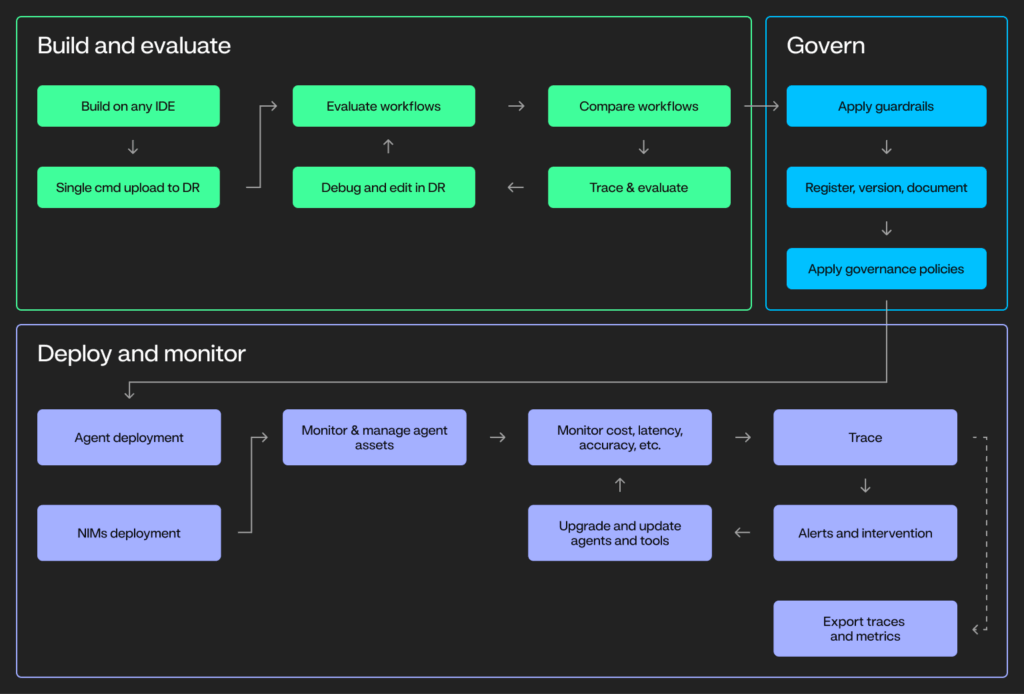
From prototype to manufacturing: step-by-step
Each staff’s path to manufacturing seems completely different. The steps beneath characterize frequent jobs to be achieved when managing the agent lifecycle — from constructing and debugging to deploying, monitoring, and governing.
Use the steps that suit your workflow or comply with the total sequence for an end-to-end course of.
1. Construct your agent
Begin with the frameworks . Use agent templates for LangGraph, CrewAI, and LlamaIndex from DataRobot’s public GitHub repo, and the CLI for fast setup.
Clone the repo regionally, edit the agent.py file, and push your prototype with a single command to arrange it for manufacturing and deeper analysis. The Agent Workforce Platform handles dependencies, Docker containers, and integrations for tracing and authentication.
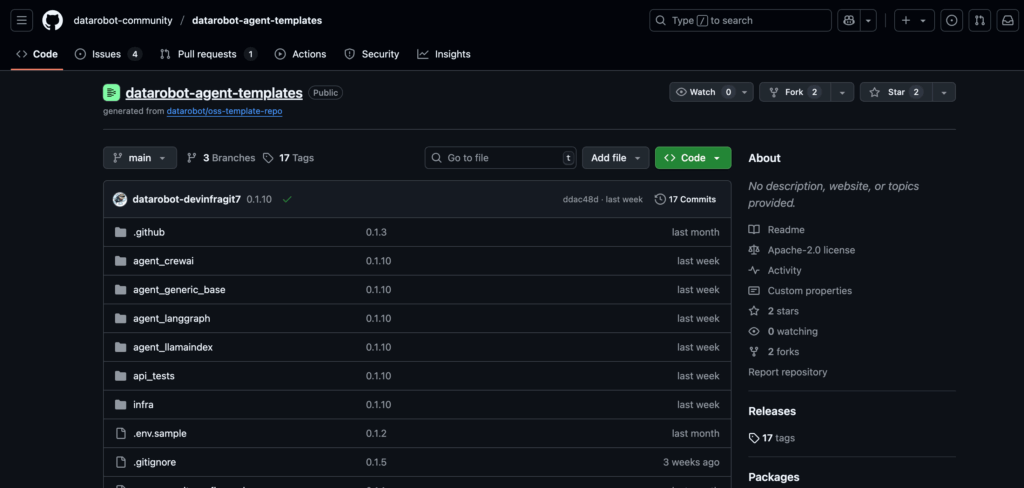
2. Consider and examine workflows
After importing your agent, configure analysis metrics to measure efficiency throughout brokers, sub-agents, and instruments.
Select from built-in choices similar to PII and toxicity checks, NeMo guardrails, LLM-as-a-judge, and agent-specific metrics like instrument name accuracy and aim adherence.
Then, use the agent playground to immediate your agent and examine responses with analysis scores. For deeper testing, generate artificial knowledge or add human-in-the-loop evaluations.
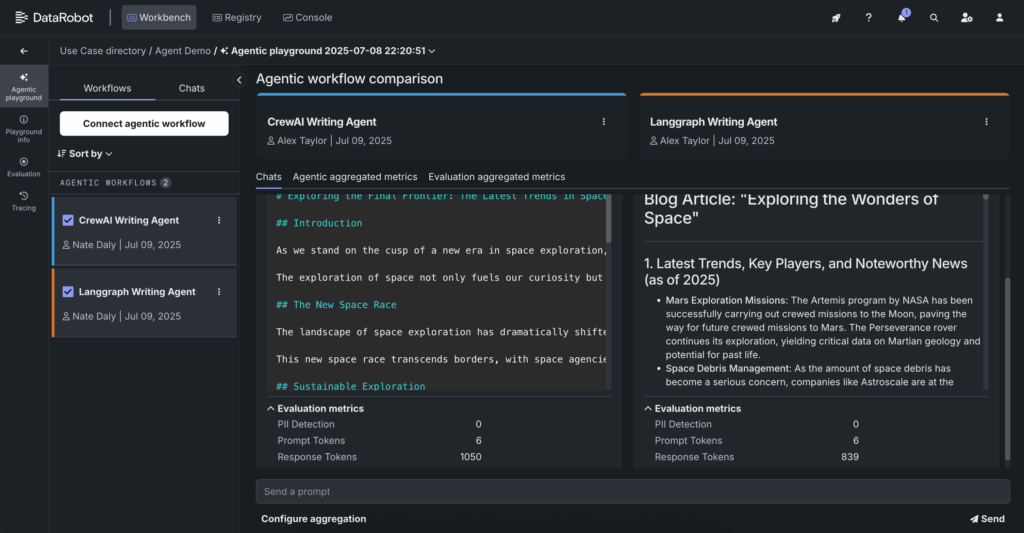
3. Hint and debug
Use the agent playground to view execution traces instantly within the UI. Drill into every activity to see inputs, outputs, metadata, analysis particulars, and context for each step within the pipeline.
Traces cowl the top-level agent in addition to sub-components, guard fashions, and analysis metrics. Use this visibility to rapidly determine which part is inflicting errors and pinpoint points in your code.
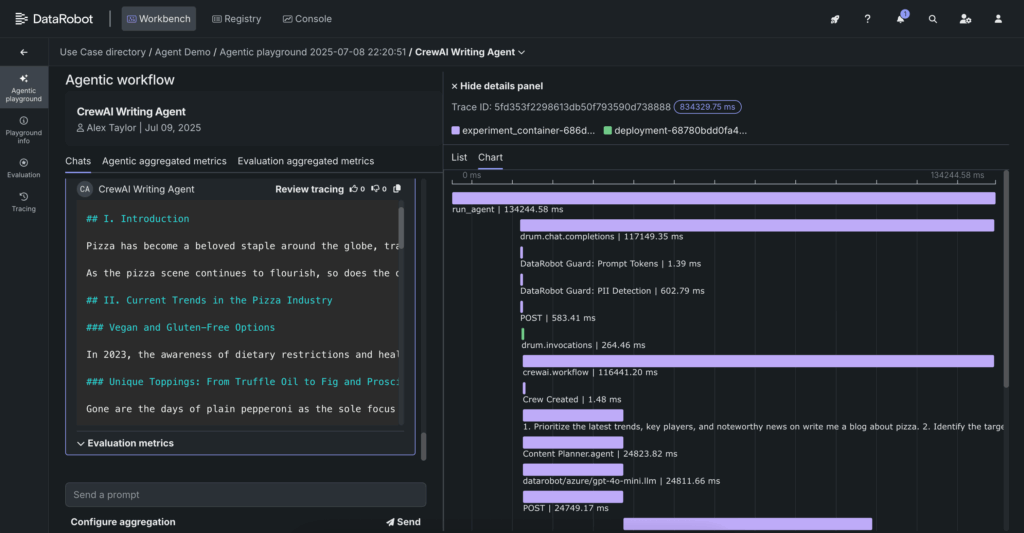
4. Edit and re-test your agent
If analysis metrics or traces reveal points, open a code house within the UI to replace the agent logic. Save your adjustments and re-run the agent with out leaving the platform. Updates are saved within the registry, guaranteeing a single supply of fact as you iterate.
This isn’t solely helpful if you find yourself first testing your agent, but in addition over time as new fashions, instruments, and knowledge have to be included to improve it.
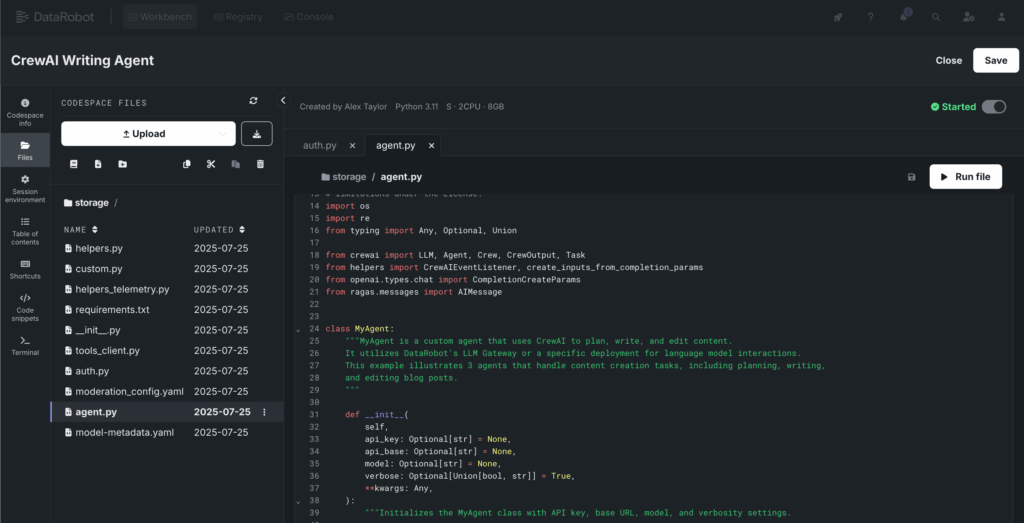
5. Deploy your agent
Deploy your agent to manufacturing with a single click on or command. The platform manages {hardware} setup and configuration throughout cloud, on-premises, or hybrid environments and registers the deployment within the platform for centralized monitoring.
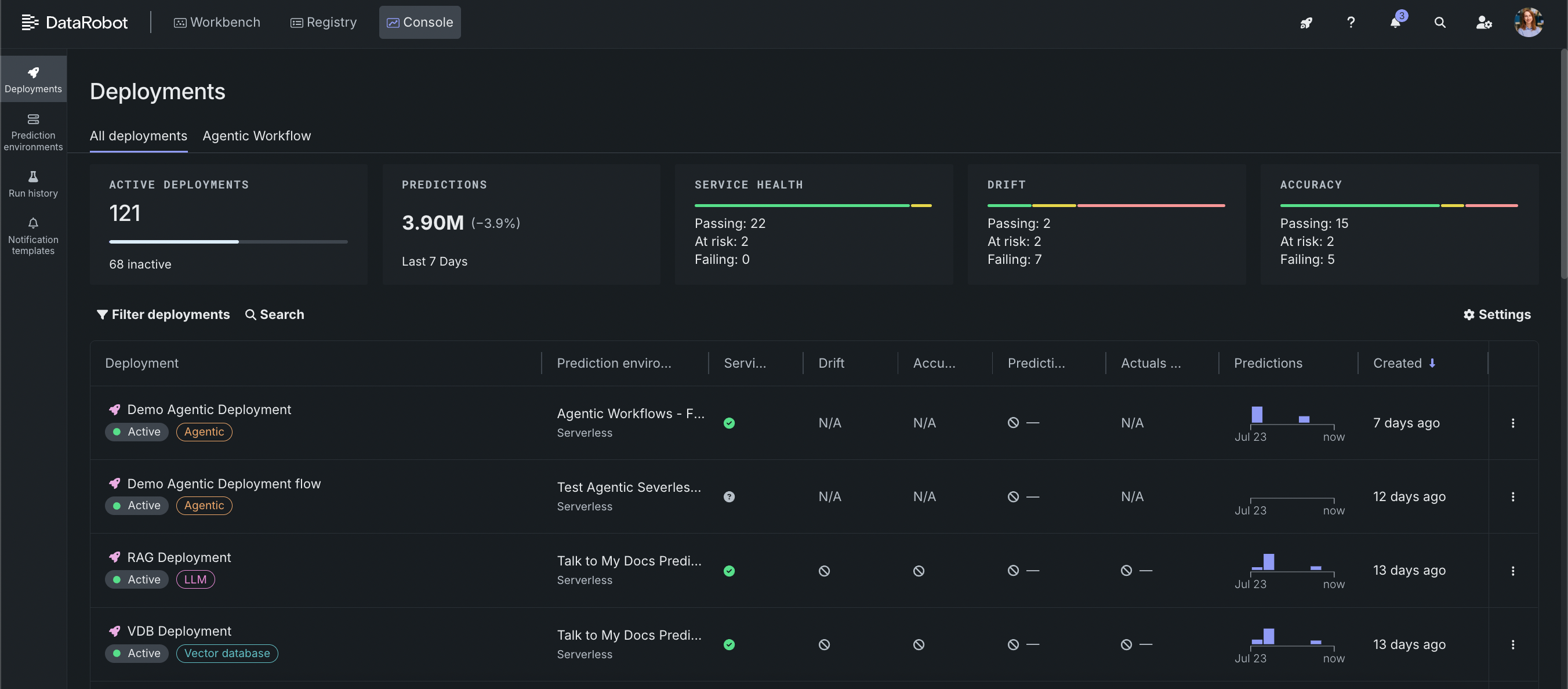
6. Monitor and hint deployed brokers
Monitor agent efficiency and conduct in actual time with built-in monitoring and tracing. View key metrics similar to price, latency, activity adherence, aim accuracy, and security indicators like PII publicity, toxicity, and immediate injection dangers.
OpenTelemetry (OTel)-compliant traces present visibility into each step of execution, together with instrument inputs, outputs, and efficiency at each the part and workflow ranges.
Set alerts to catch points early and modularize parts so you may improve instruments, fashions, or vector databases independently whereas monitoring their impression.
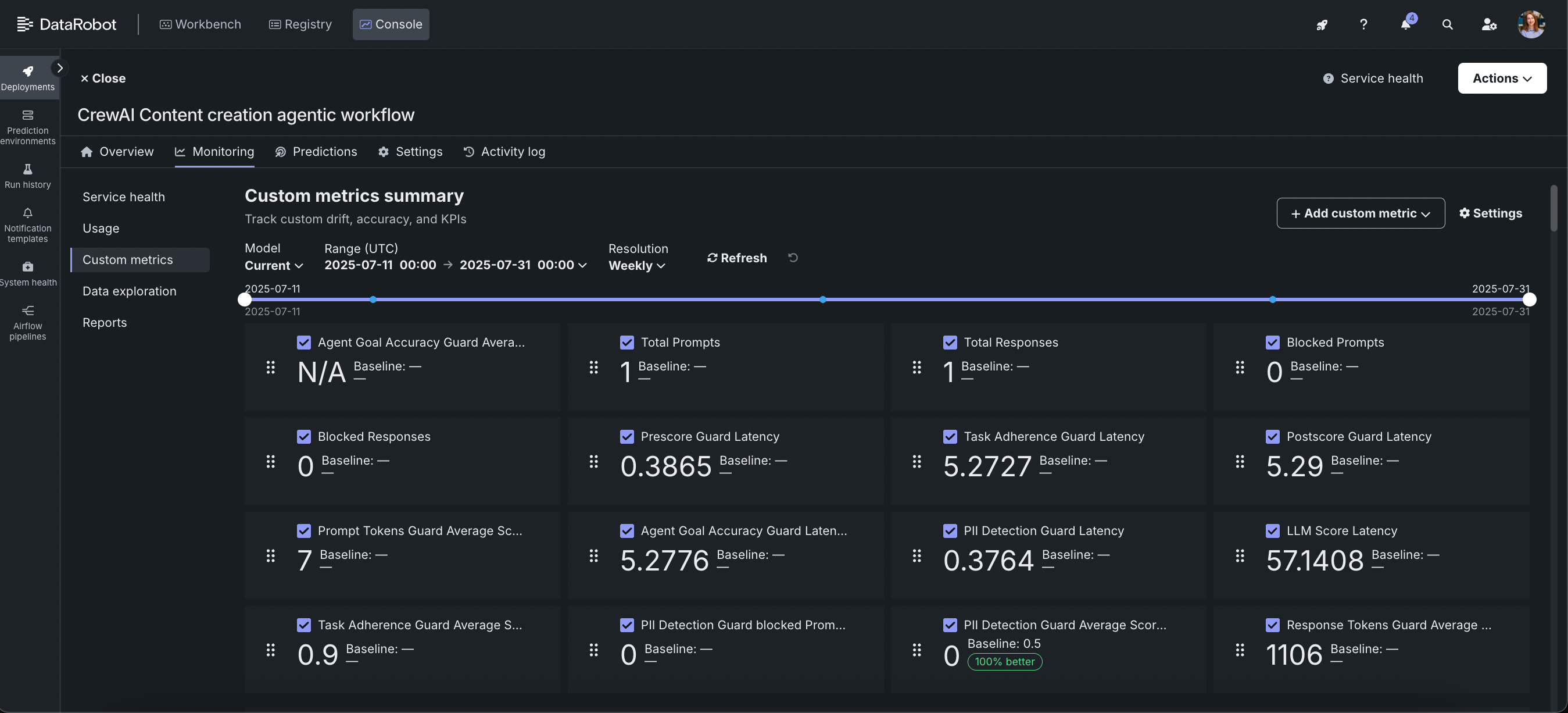
7. Apply governance by design
Handle safety, compliance, and danger as a part of the workflow, not as an add-on. The registry inside the Agent Workforce Platform supplies a centralized supply of fact for all brokers and fashions, with entry management, lineage, and traceability.
Actual-time guardrails monitor for PII leakage, jailbreak makes an attempt, toxicity, hallucinations, coverage violations, and operational anomalies. Automated compliance reporting helps a number of regulatory frameworks, decreasing audit effort and guide work.
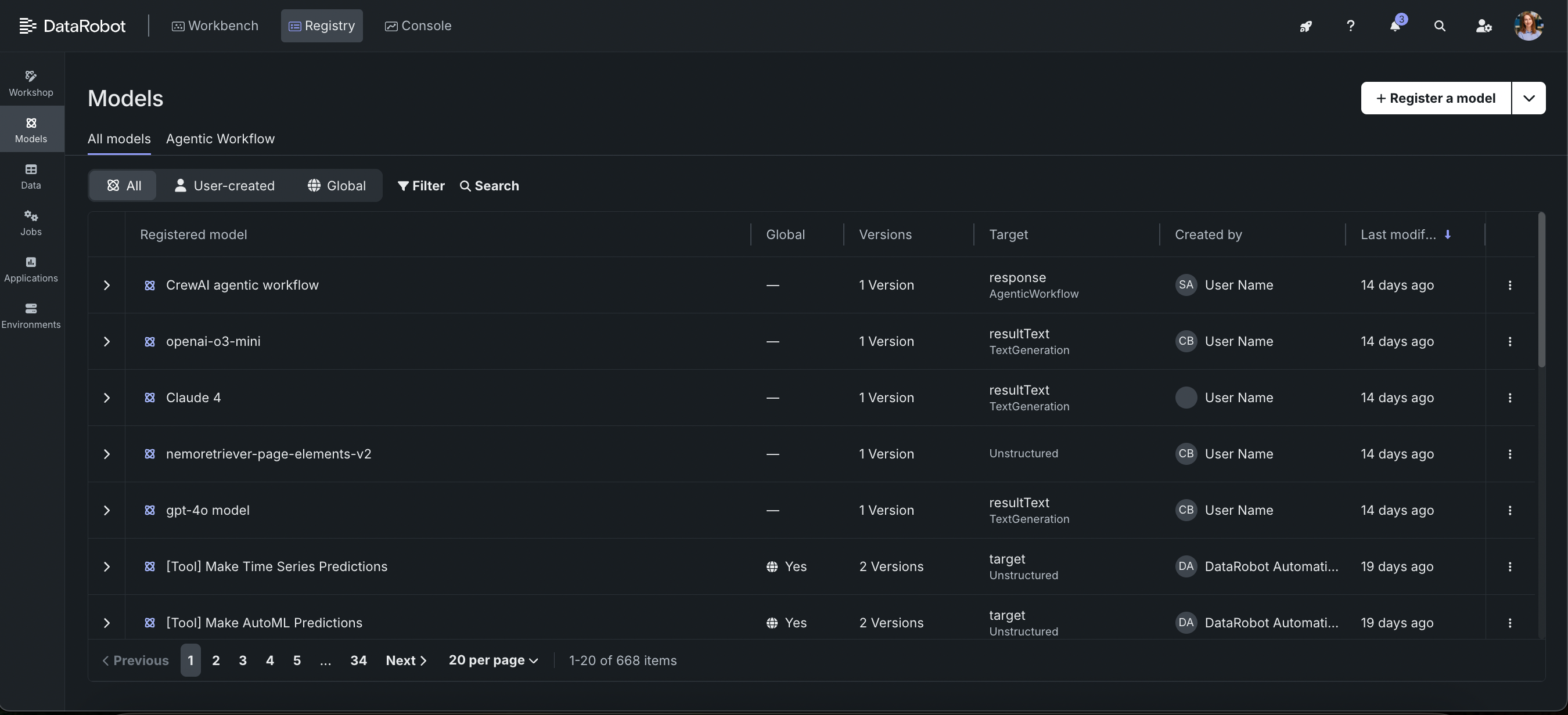
What makes the Agent Workforce Platform completely different
These are the capabilities that lower months of labor all the way down to days, with out sacrificing safety, flexibility, or oversight.
One platform, full lifecycle: Handle the complete agent lifecycle throughout on premises, multi-cloud, air-gapped, and hybrid environments with out stitching collectively separate instruments.
Analysis, debugging, and observability in-built: Carry out complete analysis, hint execution, debug points, and monitor real-time efficiency with out leaving the platform. Get detailed metrics and alerting, even for mission-critical initiatives.
Built-in governance and compliance: A central AI registry variations and tracks lineage for each asset, from brokers and knowledge to fashions and functions. Actual-time guardrails and automatic reporting eradicate guide compliance work and simplify audits.
Flexibility with out trade-offs: Use any open supply, proprietary framework, or mannequin on a platform constructed for enterprise-grade safety and scalability.
From prototype to manufacturing and past
Constructing enterprise-ready brokers is simply step one. As your use circumstances develop, this information provides you a basis for transferring sooner whereas sustaining governance and management.
Able to construct? Begin your free trial.
